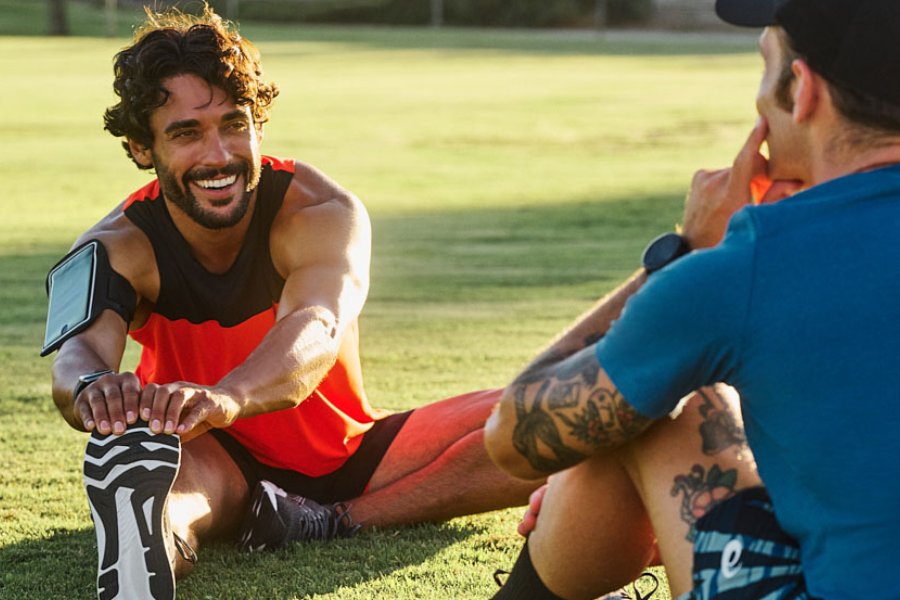Training for a marathon can be one of the most rewarding physical challenges. However, it can also lead to injuries if proper precautions aren’t taken. In this guide, we will explore how to stay injury-free while preparing for your marathon, from understanding common injuries to optimizing your training plan.
Understanding Common Marathon Training Injuries
As you embark on your marathon training journey, it’s crucial to be aware of common injuries that can arise. These include:
- Runner’s Knee (Patellofemoral Pain Syndrome): This condition occurs when the kneecap doesn’t track properly in the groove of the thigh bone, leading to pain. It often results from overuse, muscle imbalances, or improper footwear.
- Shin Splints (Medial Tibial Stress Syndrome): Characterized by pain along the shin bone, shin splints are often due to overtraining or a sudden increase in mileage.
- Achilles Tendonitis: Overuse can lead to inflammation of the Achilles tendon, causing pain at the back of the ankle.
- Plantar Fasciitis: This common injury involves inflammation of the plantar fascia, causing heel pain. It can be exacerbated by tight calves or inadequate arch support.
- IT Band Syndrome: The iliotibial band runs along the outer thigh and can become tight, leading to pain on the outside of the knee.
Understanding these injuries will help you recognize early warning signs and adjust your training accordingly.
Pre-Training Preparation
Before you begin your marathon training, take time for thorough preparation. Start with a physical check-up to ensure you are fit for running. This is especially important if you have a history of injuries. Additionally, consider investing in a gait analysis at a specialized running store. This assessment will help you understand your running mechanics and identify any weaknesses that could lead to injury.
Training Plan Essentials
A well-structured training plan is vital for marathon success and injury prevention. Begin with a base-building phase to gradually increase your mileage. Aim for a 10% increase in weekly mileage to avoid overuse injuries. Incorporate rest days and cross-training activities such as swimming or cycling to enhance cardiovascular fitness without the impact of running.
When planning your long runs, consider the three-week taper strategy. This approach involves increasing mileage for three weeks, followed by a tapering period to allow your body to recover and prepare for race day.
Footwear and Gear
Selecting the right footwear is crucial for injury prevention. When choosing your running shoes, look for features such as:
- Cushioning: Proper cushioning can absorb shock, minimizing the impact on your joints.
- Arch Support: Depending on your foot type (flat, neutral, or high-arched), different levels of arch support will be necessary.
- Fit: Ensure that your shoes fit snugly but comfortably, with enough room in the toe box to accommodate foot swelling during long runs.
Another trend nowadays is using wide toe box sneakers. These shoes are designed to allow for greater toe movement, providing enhanced comfort and reducing the risk of foot issues during long runs, especially for marathon training. The extra space helps prevent blisters, bunions, and other discomforts by letting your toes spread naturally
However, switching to wide toe box sneakers isn’t something you should rush. Your feet need time to adjust to the new fit and movement. Start by wearing them for shorter runs and gradually build up to longer distances as your feet become accustomed to the change. Understanding how they work and allowing for a gradual transition will help you get the full benefit from these sneakers.
Strength and Flexibility Training
Incorporating strength and flexibility training into your routine is key to injury prevention. Focus on exercises that strengthen the core, hips, and legs, as these areas are crucial for maintaining proper running form. Examples include:
- Squats: Strengthen the quadriceps, hamstrings, and glutes.
- Lunges: Enhance lower body strength and stability.
- Planks: Develop core stability, essential for maintaining posture while running.
Additionally, incorporate flexibility routines such as yoga or dynamic stretching. Flexibility training can improve your range of motion, reducing the risk of strains and sprains.
One beneficial device to consider is toe spacers. These can help align your toes and improve foot strength and flexibility. One of the advantages of toe spacers is that they promote proper toe alignment, which can enhance your overall foot mechanics and reduce the likelihood of injuries, such as plantar fasciitis or bunions. By encouraging your toes to spread naturally, toe spacers can complement your strength and flexibility training, contributing to a well-rounded approach to injury prevention.
Nutrition and Hydration
Proper nutrition and hydration are vital components of any marathon training plan. Ensure you consume a balanced diet rich in carbohydrates, proteins, and healthy fats to fuel your runs. Pay attention to pre- and post-run nutrition, focusing on replenishing glycogen stores and repairing muscle tissue.
Hydration is equally important. Dehydration can lead to fatigue and hinder performance. Make it a habit to drink water throughout the day and consider electrolyte drinks during longer runs to replace lost minerals.
Conclusion
Training for a marathon is a rewarding experience that can be accomplished safely with the right strategies in place. By understanding common injuries, preparing properly, following a structured training plan, selecting appropriate footwear, incorporating strength and flexibility training, and prioritizing nutrition and hydration, you can minimize your risk of injury.
Stay mindful of your body, listen to its signals, and adjust your training as necessary. With these tips, you’ll be well on your way to successfully completing your marathon, injury-free.
Stay in the know with the latest news and updates on Essential Tribune








